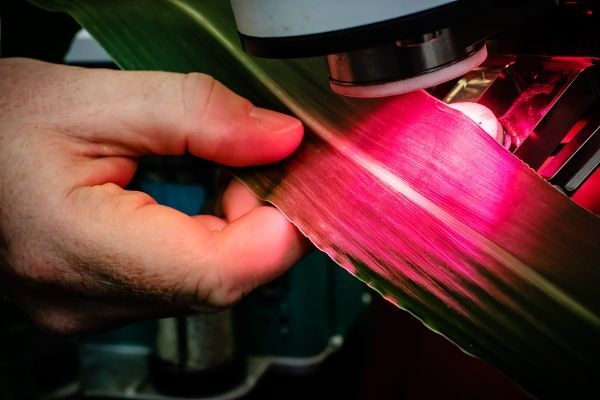Like atmospheric methane and carbon dioxide, ground-level ozone is on the rise. But ozone, a noxious chemical byproduct of fossil fuel combustion, has received relatively little attention as a potential threat to corn agriculture.
A new study begins to address this lapse by exposing a genetically diverse group of corn plants in the field to future ozone levels. The study, reported in the journal Global Change Biology, found that some members of the corn family tree are more susceptible than others to yield losses under high ozone air pollution. Discovering the genetic underpinnings of those differences could help plant scientists develop ozone-resistant corn, the researchers said.
“Ozone enters plants the same way carbon dioxide does: It diffuses from the atmosphere into the leaf,” said Lisa Ainsworth, a U.S. Department of Agriculture scientist who led the research with University of Illinois plant biology professor Andrew Leakey; University of Florida molecular genetics and microbiology professor Lauren McIntyre; and University of California, Davis plant sciences professor Patrick Brown. Ainsworth and Leakey are affiliates of the Carl R. Woese Institute for Genomic Biology and the department of crop sciences at Illinois.
Read more at University of Illinois at Urbana–Champaign
Photo: Researchers evaluate the photosynthetic traits of corn exposed to high ozone levels. In this experiment, a researcher measures the rate at which gas exchange occurs in a corn leaf. Photo by L. Brian Stauffer


